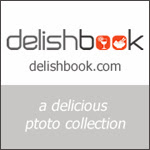
In the bustling world of catering, where precision and efficiency are paramount, the process of ordering supplies plays a pivotal role in the success of businesses. From sourcing quality ingredients to ensuring a steady flow of essential equipment, catering operations rely heavily on streamlined supply chains. This guide aims to provide comprehensive insights into the art of ordering supplies in Australia, offering invaluable tips and strategies to optimize efficiency and minimize costs.
Understanding Catering Supply Needs
Catering businesses require a diverse range of supplies to operate smoothly. These can include everything from fresh food ingredients to cooking utensils, serveware, cleaning products, and decorative items. Understanding the specific needs of your business is crucial to ensure that all necessary supplies are readily available when required.
Determining the quantity and frequency of supply needs is essential for efficient inventory management. By analyzing past consumption patterns and forecasting future requirements, caterers can avoid overstocking or running out of important items at critical moments.
Managing costs is a crucial aspect of supply ordering. Caterers must strike a balance between sourcing high-quality supplies and staying within budget constraints. Exploring cost-saving strategies such as bulk purchasing, negotiating prices with suppliers, and minimizing waste can help optimize expenditure without compromising on quality.
Finding Reliable Suppliers
In Australia’s diverse market, catering businesses have access to a wide range of suppliers, both local and national. Conducting thorough research to identify reputable suppliers is essential for ensuring product quality, reliability, and timely delivery. Online directories, industry associations, and referrals from other businesses can be valuable resources for finding trusted suppliers.
When choosing suppliers, reliability is paramount. Assessing factors such as delivery times, product quality, and customer service can help caterers gauge the reliability of potential suppliers. Establishing clear communication channels and setting expectations from the outset can foster strong and mutually beneficial partnerships.
Negotiating contracts and pricing agreements with suppliers can help caterers secure favorable terms and maximize cost savings. By leveraging their purchasing power and committing to long-term partnerships, caterers may be able to negotiate discounts, volume rebates, or special terms that align with their business objectives.
Explore https://www.nangwizard.net/ for more information on buying whipped cream in bulk.
Implementing Efficient Ordering Processes
Developing standardized order forms and templates can streamline the ordering process, reduce errors, and ensure consistency across orders. These forms should include essential details such as product descriptions, quantities, delivery dates, and contact information, making it easier for suppliers to fulfill orders accurately.
Embracing technology can revolutionize the way catering businesses order supplies. Online ordering platforms, inventory management software, and automated reorder systems can simplify the procurement process, improve accuracy, and provide real-time visibility into inventory levels. Investing in user-friendly technology solutions tailored to the needs of the business can yield significant time and cost savings in the long run.
Setting up automated reorder systems based on usage patterns can help caterers maintain optimal inventory levels without manual intervention. By leveraging data analytics and forecasting algorithms, these systems can generate reorder alerts or trigger orders automatically when stock levels reach predefined thresholds. This proactive approach to inventory management minimizes the risk of stockouts and ensures that essential supplies are always available when needed.
Managing Inventory Effectively
Organizing storage facilities in a systematic manner is crucial for efficient inventory management. Caterers should designate specific areas for different types of supplies, taking into account factors such as shelf life, temperature requirements, and ease of access. Shelving units, storage bins, and labeling systems can optimize space utilization and minimize the risk of stockpiling.
Implementing robust inventory tracking and control mechanisms is essential for monitoring stock levels, identifying discrepancies, and preventing inventory shrinkage. Barcode scanning, RFID tagging, or manual inventory counts can be used to track inventory movements accurately and reconcile differences between physical and recorded stock levels.
Regular inventory audits are essential for maintaining accuracy and identifying potential issues or discrepancies. Conducting physical counts of inventory on a scheduled basis can help detect errors, identify slow-moving or obsolete items, and ensure compliance with regulatory requirements. Analyzing audit findings and implementing corrective actions can improve inventory accuracy and optimize stock levels over time.
Ensuring Compliance and Food Safety
Compliance with regulatory requirements for food handling, storage, and sanitation is non-negotiable in the catering industry. Caterers must stay informed about relevant regulations and standards set by local health authorities and regulatory bodies. Implementing robust food safety management systems and conducting regular inspections can help ensure compliance and mitigate the risk of foodborne illness outbreaks.
Selecting suppliers that adhere to food safety standards and certifications is essential for safeguarding the integrity of the supply chain. Caterers should prioritize suppliers that undergo regular inspections, maintain proper hygiene practices, and adhere to industry best practices. Requesting certificates of compliance and conducting supplier audits can provide assurance of supplier adherence to food safety standards.
Conclusion
In conclusion, efficient supply ordering is a cornerstone of success in the catering industry. By understanding their supply needs, finding reliable suppliers, implementing efficient ordering processes, managing inventory effectively, ensuring compliance and food safety, and continuously improving processes, caterers can streamline operations, reduce costs, and enhance overall performance. By embracing innovation, leveraging technology, and staying attuned to customer preferences, catering businesses in Australia can thrive in an increasingly competitive market landscape.






















